As a symbol of advancement and tradition in China, Shanghai merges brutally innovated technologies with traces of historical culture. This guide seeks to give an understanding of the 2025 Shanghai must-sees. Be it your first visit or you are a frequent traveler, combining old historic sites with contemporary skyscrapers, lively market, and calm gardens is something that Shangai uniquely offers. From the renowned skylines of Lujiazui to the Old City’s charms, readers will learn about the many reasons that make Shanghai an exhilarating archaeological place. This article will serve as your guide to the articles and readers so that there will be no miss spots when visiting the city.
What are the top attractions in Shanghai you can’t miss?
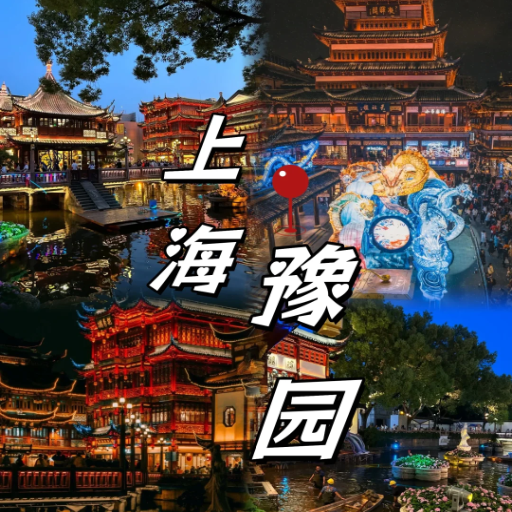
Exploring the iconic Bund: Shanghai’s waterfront promenade
The Bund serves as a platform for viewing the architecture representing the colonial period integrated with modern skyscrapers along the Huangpu river in Shanghai. These iconic structures create beautiful sights of the Shanghai skyline ‘Pudong’, which famously includes the Oriental Pearl Tower and many others, especially during evening circuses when the lights are on. It is also possible to walk 1.5 Kilometers along the stretch of river where the historic customs house and peace hotel are located and enjoy the view. The Atrium also provides a cruise that gives travelers a different angle of the wonderful city. These older and newer skyscrapers make the history of Shanghai fascinating and captivate tourists, which makes it a renowned landmark.
Panoramic views from China’s tallest skyscraper: Ascending the Shanghai Tower
At 632 meters, Shanghai Tower is the tallest skyscraper in China, and the panoramic views from the 118th observation deck are not comparable. Visitors are guaranteed unparalleled views of Shanghai from this observation deck. Additionally, the Tower’s swift elevators, some of the fastest in the world, carry guests to the top in under 40 seconds. Its astounding height is also wonderous because of its sustainable design, which includes a one-of-a-kind double-skin façade for enhanced energy efficiency. Moreover, the breathtaking Huangpu River and the city’s incredibly built urban area are an unforgettable visual experience combined with the view from the summit.
The Yu Garden’s exquisite architecture is unparalleled.
The Yu Garden is located in China’s city of Shanghai and owes its architecture to Yu Garden’s ancestral designs, which were constructed in medieval China. Crafted in 1559, it has been a part of the Yu Garden ever since. Spreading across 5 acres, the garden is sculpted to perfection. The garden is fortified with curved promenades, pavilions with engravings, rockeries, ponds filled with coi, and so much more. Notable eye-catchers include the intricate carvings, pavilions, and exquisitely unique cois. Flower rock, a dazzling centerpiece of the garden, is famous for its inner beauty. The garden encapsulates architecture and nature in a sky-high masterpiece, bringing peace that is true to Greek proverbs, Chinese art, and philosophy. In addition, the supporting structure of the Yuyuan Bazaar eases the need for traditional snacks and gifts, thus making the Yu Garden a site of importance in Shanghai.
How do you experience Shanghai’s blend of old and new?
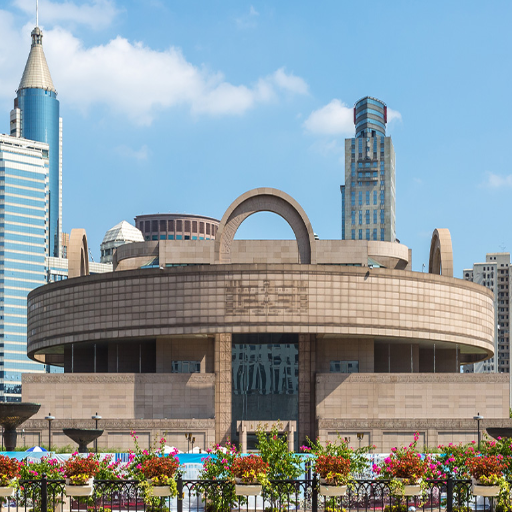
Meandering Through The Enchanting French Concession
The French Concession’s exploration gives a unique insight into Shanghai’s colonial heritage and lifestyle. This area is also known for its street trees and styled European villas which is a sharp difference from the city’s modern skyline. Tourists can walk through the Tianzifang and Xintiandi districts, known for their art galleries, boutique shops, and modern cafes, illustrating the contemporary Shanghai culture. The region’s significance can be further appreciated through its architectural and historical landmarks, such as Sun Yat-sen’s former residence, which add to the charm of the French Conceries. The unique blend of modern and traditional cultures makes it an area worth visiting.
Exploring the Shanghai museum: An expedition around Chinese history
Providing an insight into Chinese history and culture, the Shanghai Museum is a must-see attraction. It boasts its outstanding collections of more than 120,000 artifacts, such as ancient bronzes, ceramics, paintings, jade, calligraphy, and other historically significant items. The museum lies in People’s Square and is housed in an iconic round building. The circular structure of the museum represents ‘a square earth and round heaven’, a motif rooted in the Chinese understanding of cosmology. Guests can learn about the history of Chinese writing or admire the delicate Ming and Qing furniture in the several thematic galleries. With a combination of advanced technologies and multilingual support materials, the Shanghai Museum profoundly impacts understanding of the history and artistic endeavors of the nation.
Appreciating the sci-fi Pudong skyline
Marvelously sophisticated and multifaceted engineering techniques blended with contemporary architectural innovation and Shanghai’s fast-paced development gives rise to Pudong’s eccentric sceneries. From the astonishing heights of the Shanghai Tower and Jin Mao Tower to the Polygonal structure of the Oriental Pearl TV Tower, the area is adorned with numerous iconic symbols that showcase modern construction and sustainable architectural practices. The Shanghai Tower, for example, is the tallest building in China, which stands 632m tall. With its double-skin facade alongside its incorporated wind turbines, the building’s gross energy consumption is drastically lowered, enabling on-site renewable energy generation. The high-strength steel combined with reinforced concrete guarantees safety within seismic zones, while the skyscrapers are astounding in their structural design balance alongside their elevated creativity. All these features mark infrastructure and architectural techniques utilized in building the skyline of Pudong as outstanding, deeming the area a breathtaking depiction of the dreams Shanghai holds of overtaking the world.
What are the best day trips from Shanghai?
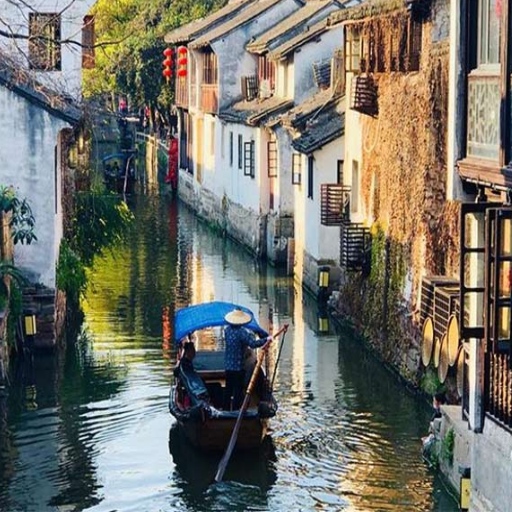
Zhujiajiao: An Idyllic Water Town Surrounding Shanghai
Zhujiajiao, known as the Venice of Shanghai, is a water town approximately 47 kilometers from Shanghai. It is about a one-hour drive from Shanghai and is perfect for a day trip because travelers can experience water life alongside modern trade and tourism. The town is famous for its canals, looming ancient structures, and serene nature preserved for over one thousand seven hundred years.
1. Oldest Bridges
- Fangsheng Bridge (1571, Ming Dynasty): This magnificent bridge displays five arches, which make it the Dubai of limestone bridges in Japan. The bridge boasts advanced stone masonry structures from the Renaissance era.
- 36 wooden, stone and concrete bridges connect different parts of the town, allowing easy access throughout the area.
2. The Network of Canals
- The town is bordered by 47 square kilometers and can turn even the sailor into an artist, capturing the beauty of buildings, nature, and breathtaking water systems. Boat rides are designed for trading, exploring the beauty of the town, and sailing through history.
3. Traditional Homes
- The layout of the houses was inspired by nature and Feng Shui, which allows the house to be ideally situated while being made of wood, stone, and bricks.
4. Accessibility:
- One can access Zhujiajiao through the modern highway network using G50 Shanghai-Chongqing Expressway. It can also be reached by public transport through the Line 17 of the Shanghai Metro.
The mix of modern engineering with cultural preservation ensures that the Zhujiajiao region is relevant from both engineering and tourism perspectives. Unique activities like walking along North Street, kayaking in the canals, or visiting several museums dedicated to the region’s heritage are some of the things tourists can do there.
Embracing the beauty of Tianzifang: An artsy “maze” of alleyways
Tianzifang is an exquisite cultural spot in Shanghai’s former French Prefecture, famous for its twisty narrow alleys and river shikumen buildings. This artistic zone has many specially designed shops, art booths, and contemporary-style galleries that sell a wide variety of art school stylish souvenirs and modern artwork. Tianzifang is also known for its many cafes and restaurants serving local and international dishes. Tianzifang is a culturally rich area with outstanding historical and contemporary architecture. Thus, it is a tourist hotspot for anyone who wants to experience the unique side of Shanghai.
Where can families find fun attractions in Shanghai?
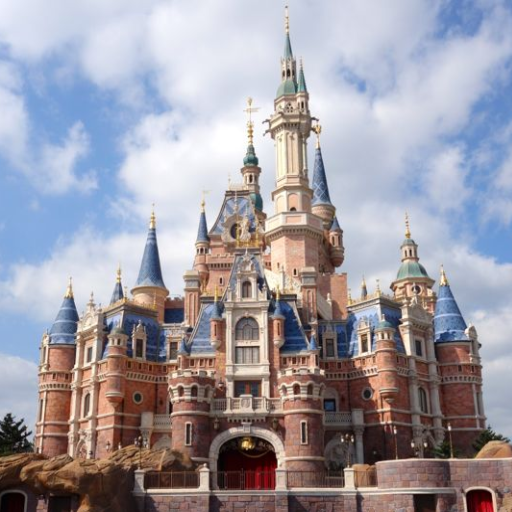
Capturing magical experiences at Shanghai Disneyland Park
Shanghai Disneyland Park provides a fully immersive experience for guests with its sophisticated rides, entertainment, and dining choices. Families can engage in themed areas like Fantasyland and Tomorrowland, enjoy incredible rides like the Tron Lightcycle Power Run, and enjoy stunning shows and parades. Like all Disneyland theme parks, it features an Enchanted Storybook Castle as its centerpiece to show modern innovative technologies fused with timeless Disney tales, ensuring magic for everyone.
Experiencing the wonders of ocean life at the Shanghai Ocean Aquarium
As one of Asia’s most significant and impressive aquariums, the Shanghai Ocean Aquarium is next to the Oriental Pearl Tower. The aquarium features over 15,000 marine and freshwater creatures from around the world. It is renowned for its thematic zones representing diverse aquatic environments such as the Amazon rainforest, Polar regions, and a China zone. The 509-foot-long undersea tunnel is a significant highlight, which offers a fascinating, out-of-the-world view of life under the sea. Visitors can enjoy the jaw dropping educational exhibits and fish, such as jellyfish, sharks, and the rare Chinese surgeon, ensuring an unforgettable experience.
What are some unique Shanghai experiences for tourists?
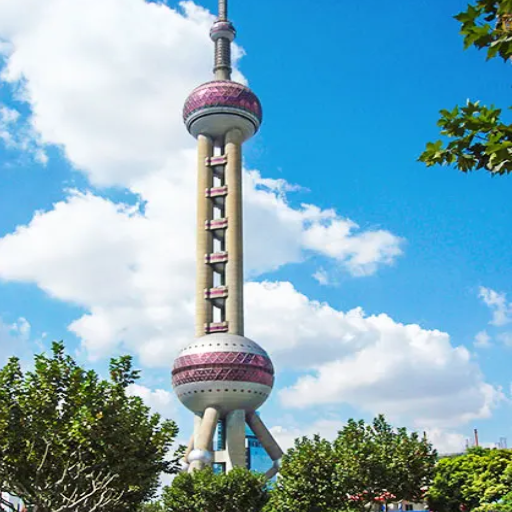
Relaxing atop the observation deck of Oriental Pearl Tower
At the Oriental Pearl Tower, one gets treated to a stunning panoramic view of Shanghai’s skyline, the Huangpu River, and the Bund’s famous landmarks. At 259 meters above the ground, the experience is further enhanced by the observation deck’s glass-floored viewing platform, making it possible for guests to look down upon the cityscape as if flying over it. In addition to the views, the tower also houses a revolving restaurant and some historical exhibitions, making it a one-stop location for leisure, education, and fine dining.
Finding peace of mind at Jade Buddha Temple
The temple is an essential spiritual center in Shanghai and provides a peaceful haven away from the hustle and bustle of the city. Founded in 1882, the temple is well known for its stunning art pieces, such as the two jade Buddha statues crafted in Burma. People can stroll in the calm courtyards and decorated halls and marvel at the splendid beauty of Chinese architecture. The temple is an active Buddhist site today and allows for contemplation, reflection, and meditation, which allows for an authentic experience of culture and history.
How do you plan your Shanghai itinerary for the best experience?
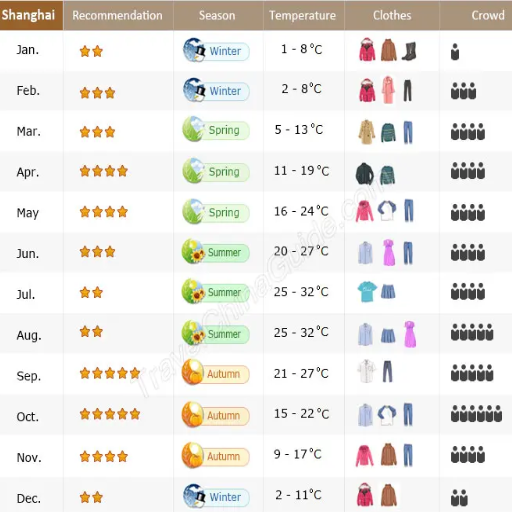
Best Time to Travel to and Explore Shanghai
The best times to visit Shanghai depend greatly on one’s weather preferences, air quality, and expected season-specific activities. Statistically and in terms of tourism, spring (March to May) and autumn (September to November) months stand out as the best periods because of acceptable temperature ranges and lower humidity. The average daytime temperature during these months is between 15 and 25 degrees Celsius, making traveling around the city very comfortable.
Spring months are marked by flowers blooming all around and festivals such as the Qingming festival, while autumn offers cool air and beautiful colored leaves. During these months, the air quality is also expected to be the most stable, with lower levels of PM2.5 than in winter, when coal heating increases pollution levels.
Summer months are also to be avoided due to the typhoon season, which runs from June to September, with the strongest activity in July and August. Additionally, Do Not travel during the days of the Chinese national holidays, such as Golden Week (October 1-7) and the Lunar New Year, as they are overly crowded and the price of accommodation is very high.
Following the travel recommendations makes your trip to Shanghai as comfortable and enriching as possible.
Understanding Public Transportation in Shanghai
Shanghai is renowned for having one of the most effective and developed public transportation systems globally, which makes it easy for tourists and citizens to move around. The Shangai Metro forms the core of the system, with 19 lines and more than 500 mega stations serving the key parts of the city. The fare structure is economical, and a travel card for Shanghai Public Transport is available, as well as mobile payment options such as Alipay and WeChat.
In addition, the city has an extensive network of buses that may not be convenient for English speakers because of poor signage. Taxis and Didi ride-hailing services are available as well, although they tend to be costlier than the other methods. Moreover, getting across the Huangpu River by ferry is also cheap and beautiful.
The use of route planning software such as Maps means that getting around the city should be much easier. The service delivers the desired effect, although it can be uncomfortable during rush hour, so traveling at off-peak hours is best.
Combining modern features with a historical touch.
Shanghai has a unique blend of history and modernity. Architects and historians are astounded by the eastern and western fusion evident in the city’s skyline. Modern buildings such as the Oriental Pearl Tower and the Shanghai Tower tell a story of rapid acceleration in tourism and construction. At the same time, the Bund narrates a different story with its colonial-era buildings. Travelers can also experience stunning traditional Chinese architecture and designs in Yu Gardens, accented by the modern activities in Nanjing Road and Lujiazui District. During Zhujiajiao Water Town, one of the oldest towns in Shanghai, tourists can enjoy the contrast of the ever-evolving city of Xintiandi. This is an excellent example of Shanghai marrying modernity and ancient traditions.
Reference sources
Frequently Asked Questions (FAQs)
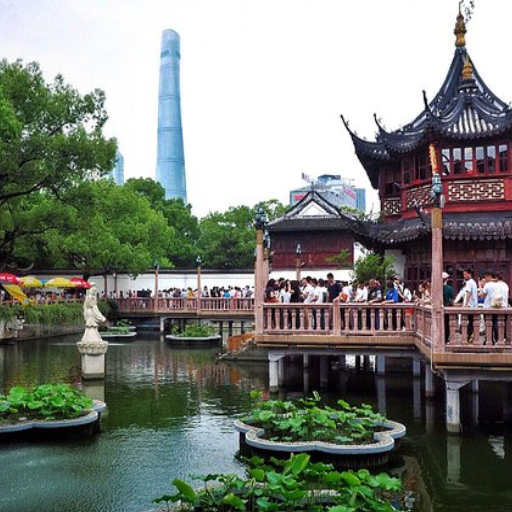
Q: What are the top Shanghai attractions for tourists?
A: Some of the best places to visit in Shanghai include the Oriental Pearl Tower, the Bund, Yu Garden, Shanghai World Financial Center, Nanjing Road, and the Shanghai Museum. These attractions offer a mix of modern architecture, historical sites, and cultural experiences.
Q: Is the Oriental Pearl Tower worth visiting during a Shanghai tour?
A: Yes, the Oriental Pearl Tower is definitely worth visiting. As a famous landmark of Shanghai, it offers stunning panoramic views of the city skyline. The tower also houses the Shanghai History Museum, which provides insight into the city’s past.
Q: What are some must-visit places in Shanghai for first-time visitors?
A: First-time visitors should prioritize the Bund, Nanjing Road for shopping, Yu Garden for traditional Chinese architecture, the Shanghai World Financial Center for incredible views, and a stroll through the French Concession area. These attractions showcase the diverse aspects of Shanghai’s culture and history.
Q: What is Nanjing Road and why is it popular among tourists?
A: Nanjing Road is one of the world’s busiest shopping streets and a major tourist attraction in Shanghai. It’s popular for its vast array of shops, from traditional Chinese stores to modern malls, as well as numerous restaurants and street food vendors. The vibrant atmosphere, especially at night, makes it a must-visit destination.
Q: Are there any ancient towns to visit around Shanghai?
A: Yes, there are several picturesque ancient towns near Shanghai. Zhujiajiao and Qibao are two popular water towns that offer a glimpse into old Shanghai with their traditional architecture, canals, and bridges. These towns make for excellent day trips from the city center.
Q: What are some of the best places to visit in Shanghai for modern architecture?
A: For modern architecture, visit the Pudong area, which includes the Shanghai World Financial Center, Shanghai Tower, and Jin Mao Tower. The Bund area also offers a contrast of colonial-era buildings and modern skyscrapers across the river. The Shanghai Urban Planning Exhibition Center provides an interesting overview of the city’s architectural development.
Q: What tourist attractions in Shanghai showcase the city’s history?
A: To explore Shanghai’s history, visit the Shanghai Museum for its extensive collection of Chinese artifacts, the Jade Buddha Temple for its religious significance, and the Shanghai History Museum located in the Oriental Pearl Tower. The former French Concession area also offers a glimpse into Shanghai’s colonial past.
Q: What are some things to do in Shanghai for nature lovers?
A: Nature enthusiasts can enjoy Yu Garden, a classical Chinese garden in the heart of Shanghai. Century Park, the largest park in Shanghai, offers a peaceful retreat with lakes and green spaces. The Shanghai Botanical Garden is another excellent option for plant lovers and those seeking a quiet day in nature.
Q: How many days should I plan for a visit to Shanghai?
A: While you can see many highlights in 2-3 days, planning for 4-5 days allows for a more comprehensive Shanghai tour. This timeframe lets you explore major attractions, experience the local culture, and potentially take a day trip to nearby water towns or Suzhou. Keep in mind that the weather in Shanghai can be unpredictable, so allow some flexibility in your itinerary.
Q: Are there any unique or lesser-known places to visit in Shanghai?
A: For a unique experience, visit the 1933 Slaughterhouse, an Art Deco-style building now housing shops and restaurants. The Power Station of Art, a contemporary art museum in a converted power plant, is worth exploring. Tianzifang, a maze-like neighborhood of narrow alleys filled with boutiques and cafes, offers a glimpse into the more artistic side of Shanghai. These spots provide a different perspective on the city compared to the more famous Shanghai tourist attractions.